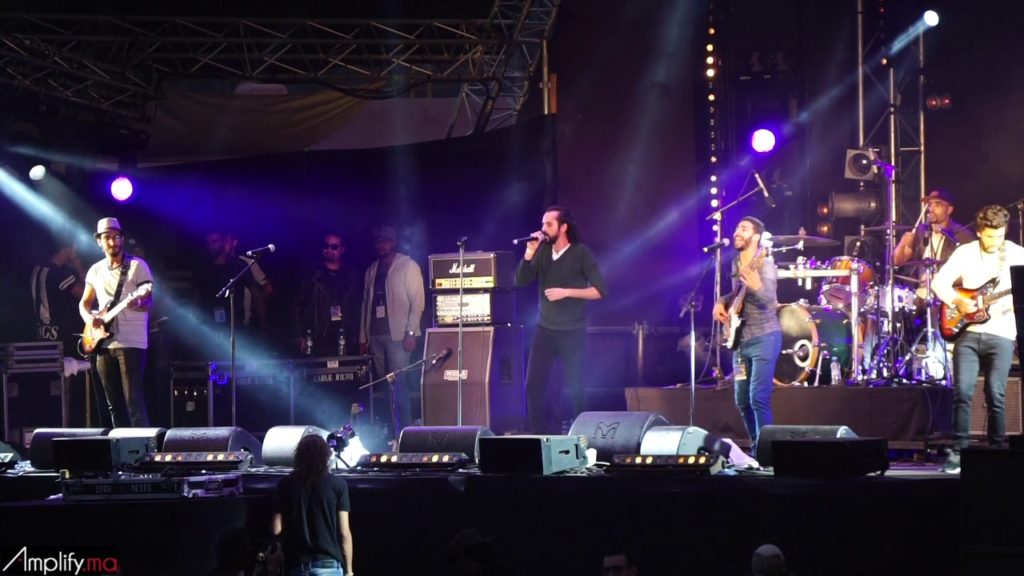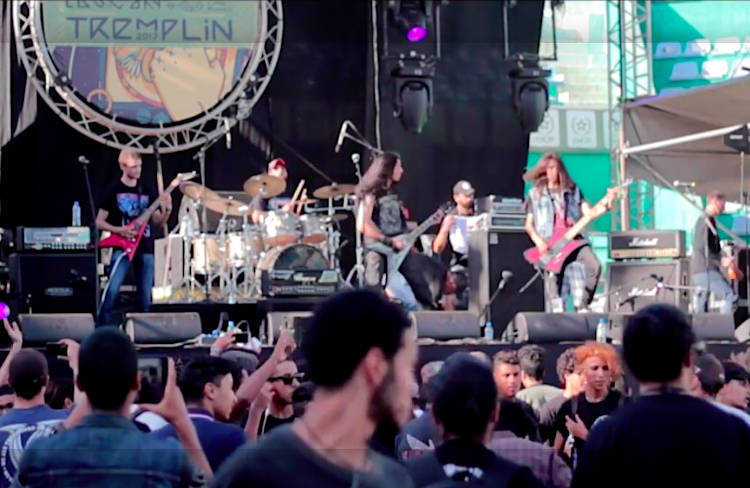
The Birth of the “Nayda” Movement :
Let’s take a moment to talk about the late 90s. Moroccans were more exposed than ever to Western culture. TV channels like MCM and VIVA were becoming accessible and the younger generation. They were especially impressed by Rap and Rock than by any local music. At the time it was only an impression, now there is a name for it: ‘Nayda’. The term today is a label for enthusiasts of what the local media describe as “Moussiqa Chababiya”. Vague terms collide with even more vague terms, but at the center of everything, a band makes sense.
If it was not for this band, there would not have been a precise name for the spirit which haunts the young people since the end of the 90s. The spirit which is touched by the “Hayha” (apparently, a form of music), his presence is called “Nayda” (we are talking about the spirit of Hoba here). Ironically, thinking of this band that sang 11 years ago “Hoba kalima ma fiha m’3na”, I couldn’t help but notice the lines of one of the songs from their latest album.
The refrain from “Jnouni” looks like this: “Ma3ynach mazal / machbe3nach mazal / mansektouch mazal / 20 3am o mazal”. The metaphor continues. The name of the band, Hoba Hoba Spirit, describes this movement and its archetypes (Betweenatna is like its diabolical twin). Their method is to take Rock pictures and reconstruct them around a Moroccan theme, thus creating their own archetype. Their originality comes from this.
Almost 20 years of high activity for the band :
This is a band that released an album every one or two years since 2003. The longest period being between Kalakhnikov (2013) and Lost (2016). Frankly, this is not plenty of time to write, record and produce an album. There weren’t a lot of clues in Lost as to what they planned to do next, but with 20 years of experience, I imagine they know perfectly well what works for them and what doesn’t. Their latest record is an example of this, as it is essentially a compilation of what typically works for them and beyond.
Most of their records, at least for me, were composed of decent songs, with one or two that stand out more than the others and that are particularly interesting. Their approach is however interesting in its entirety. The ability to spot what is more Rock’n’roll in Morocco and present it in a musical format deserves special attention, and we have had many opportunities to focus on it in the last 20 years.
The most interesting songs are those that use a whole new concept to drive the point home. Not just a basic structure with more setbacks to get a Moroccan sound (listen to the last 2 minutes of Saharabbey Road by Vetusta Morla). Songs like Black Moussiba, Zammita, Ma’ejebtinich and others use a new aesthetic that has not been very developed during their careers. Once the new aesthetic is established, it enters a spiral of re-declarations. Kamayanbaghi is, in the crudest terms, a compilation of remakes of these aesthetics; a list of new archetypes.
Maybe it is time to listen to some music now : Kamayanbaghi Youtube Playlist
This is not the typical Hoba Hoba Spirit album. It sounds like them of course, their humor and their usual themes are there. However, it’s as if the music is starting to take itself a little more seriously. The use of brass instruments certainly add flair. That’s what I meant by “Kamayanbaghi”, a compilation of what works for Hoba Hoba Spirit and beyond.
“Moulay Tahar”, which presents an excellent vocal work by Othmane Hmimar, is an honest metal interpretation of a traditional Zammita song (I expected a majestic guitar solo). “L’b7ar” is a song about illegal immigration and the conditions in the country (very recurring theme). It shows the band in all its splendor today. An essential brand of Hoba Hoba Spirit is music that attracts both young Hipsters, with, always online, more inclined to technical and innovative music and others, who are looking for ambiance. In “Tri9i” they really touched something; it is the final form of the North African bard song.
Same Old receipes but with a touch of Novelty :
I don’t usually expect something very thematic from local artists (maybe it has to do with language). Hoba Hoba Spirit is no exception. Réda Allali’s Darija-French merger is still there. “Mchat 3lia” is a typical lover’s song full of remorse until it is a question of images and messages. A testament to their ability to tell stories is “Nabil the Hbil”. Of all the characters they have developed, Najat / Najoua, Jamal, Fhamator (the others?), Nabil is the most real. So, of course, the conditions in the country piss off a lot of people including the Rock stars. This song about women resonates with recent events in January 2018. Women’s liberation and sexual harassment were fairly publicized during this period.
In terms of musical quality, their latest album “Kamayanbaghi” is a success. It is contrasting with their previous albums and and what is published today in Morocco. In other words, They couldn’t have chosen a better time. However, if you haven’t noticed, in the past five years, pretty scary things have happened in the music industry. Technological advancement has allowed not only new ways to share and monetize music, but also new ways to create and produce it. Nowadays, you can recreate almost any sound at the click of a button. The only choice is to step up your game. “Charles Darwin would be proud,” said Samantha Chang in an article published in Billboard magazine. “The current musical climate is certainly testing his theory of survival of the fittest.”
A new beginning for the band?
So for 2018, expectations from a band like Hoba Hoba Spirit would be high. What sets them apart from other local band is that they have survived for 20 years. And at this point, I’m not even sure I can classify them in the same category as the other groups. Indeed everyone listens to Hoba Hoba Spirit (more or less of course). But even Moroccans who are not fans of Rock or Reggae. in particular. They are a little shorter than the national icons.
The group made the bold decision to go digital, “the distribution method in CD format is unfortunately too complicated. On the other hand, streaming platforms require payment in exchange for visibility and we are not used to to work like that, “said Réda Allali in an interview with Huffpost Maghreb” we live with our time, at least we try. ” Kamayanbaghi signals a much more significant transition in the career of HHS, it is their second beginning.




About The Author: Badr Sellak
Ecrivain, Bloggeur et parfois journaliste freelance. Mes centres d'interêts sont entre autre la musique, la littérature et la publicité.
More posts by Badr Sellak